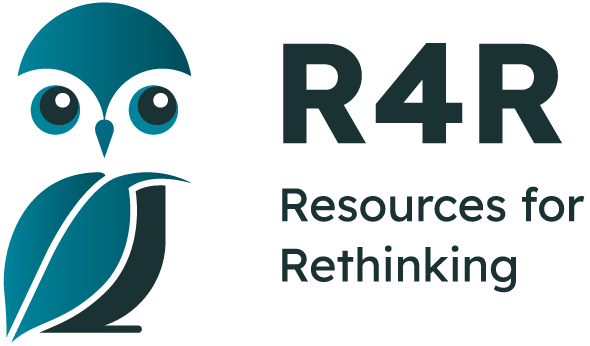Search for Resources

Resources
-
Keep Wild Animals Wild (K-2)
This set of eight lessons provides an opportunity for students to explore wild animals and the types of adaptations that make wildlife successful in their own environment. The differences between domesticated and non-domesticated animals are evaluated,...
Full curriculum matchAvailable for download -
Shaping up Summer
In this fourth book of the "Math in Nature" collection, geometric concepts are explored through captivating pictures and poetic text that typify this series for young readers. The interactive experience asks students to answer math questions...
Full curriculum matchAvailable to Order -
Never Cry Wolf
This biographical novel by one of Canada's most acclaimed authors describes how a scientific assignment to study wolves in the Northwest Territories transformed a nieve, young biologist into a fierce and passionate advocate for wildlife. When Farley...
Full curriculum matchAvailable to Order -
Needs vs Wants
In developed nations like Canada we live in a world of abundance where the desire for the latest products often outweighs the social and environmental costs of our purchases. This lesson develops the financial decision-making skills of young students...
Full curriculum matchAvailable for download -
Pumpkins Against Poverty
This unique STEM learning unit teaches students that ingenuity and resourcefulness can transform communities living in poverty. The pumpkins familiar to all of us as fall decorations become the catalyst for change in an area of Bangladesh where...
Full curriculum matchAvailable for download -
Dangerous Decibels
In comparison to other environmental issues noise pollution often receives little attention. Yet, our world is becoming increasingly noisy and there is an important concern about the human and environmental damage from all of this loud sound. ...
Full curriculum matchAvailable for download -
Could We Rid The World of Mosquitoes?
Using the current concern over the spread of the Zika virus as a starting point, this informative video provides a balanced discussion of the promise and pitfalls of biotechnology in controlling insect-borne diseases. In addition to Zika, the program...
Full curriculum matchAvailable for download -
Unlimited: Renewable Energy in the 21st Century
Unlimited: Renewable Energy in the 21st Century is a documentary film aimed at providing a general introduction about the virtues and benefits of moving away from fossil fuels and towards renewable energy. The strength of the video is the peer teaching...
Full curriculum matchAvailable for download -
Natural Figures
The natural world contains an infinite variety of shapes and patterns of which students are often unaware. In this outdoor activity, students look for geometric shapes in nature to help them discover the diversity of the natural environment. Students...
Full curriculum matchAvailable for download -
Leaf Magic
In this fall activity, children adopt a tree and observe it throughout September and October. The goal is to deepen students' awareness of individual trees and encourage a greater understanding and appreciation of their local environment. Students...
Full curriculum matchAvailable for download -
The Least Deadliest Catch
Fish stocks around the world are being depleted at an alarming rate, and yet growing populations are more dependent on these vital food sources than ever. The Water Brothers venture to the East Coast of the US and Canada to witness first-hand how overfishing...
Full curriculum matchAvailable for download -
Everyone Counts
This creative teaching unit uses a multidisciplinary instructional strategy to actively engage learners in analyzing and describing the issue of global inequality. Data from Oxfam’s “Young Lives” international research project...
Full curriculum matchAvailable for download -
Plastic Bag
The commonly asked question “Paper or plastic?” is simply a reflection of how common the use of plastic bags has become. In the United States alone, over a billion plastic bags are given away to customers every day. Less than 3% of those bags...
Full curriculum matchAvailable for download -
Biodiversity and Our Health
Dr. Chivian looks at polar bears and cone snails -- species whose survival is threatened by climate change and what medical science stands to lose if these species disappear. Specifically, Chivian looks at how studying polar bears in their native habitat...
Full curriculum matchAvailable for download -
Four Directions Teachings
Four Directions Teachings is a visually stunning, audio narrated resource for learning about indigenous knowledge and philosophy from five diverse First Nations in Canada. Four Directions Teachings honours oral tradition by creating an environment where...
Full curriculum matchAvailable for download -
Bringing Data to Life 14-16 years
This well planned resource includes 3 sessions that have students represent real life data in different means. It includes ready to use presentations and handouts, background information and lesson plans. Students will be using Session 1: Learners are...
Full curriculum matchAvailable for download -
Last Days In Africville
The African Canadian village located just north of Halifax is a place of stark contrasts in the 1960's. Industries mar the natural beauty while wretched living conditions are overpowered by the gentleness of the Africville residents. For Selina,...
Full curriculum matchAvailable to Order -
Fertilizers and the Environment
This resource examines the role of fertilizers in meeting the challenge of feeding a growing world population on a finite amount of arable land. Students will recognize that fertile soil is a limited resource and describe how fertilizers can increase...
Full curriculum matchAvailable for download -
Sense Nature
In this outdoor activity students use all of their senses to discover local and native species of plants and animals along with their habitat needs. Students also learn how the information from their senses combine to create an awareness of the natural...
Full curriculum matchAvailable for download -
Big Picture Project: A Beautiful Planet
The Big Picture Project provides a unique perspective on the changing earth through the eyes of an astronaut and empowers students to take small actions in their everyday lives that will have major impact on the planet. Students watch the trailer...
Full curriculum matchAvailable for download

